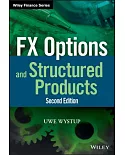Most of us would accept that recent large economic fluctuations have been caused by crashes of speculative bubbles in asset markets. For example, few would disagree that the most important cause of the global financial crisis in 2008 was the collapse of an unprecedented bubble in U.S. housing markets. However, the reasons why bubbles frequently occur in various financial markets, and why bubbles collapse are not always well understood. The book provides a new theoretical explanation of bubbles and crashes to help answer questions relating to how asset bubbles come about, why they persist, and the causes of the subsequent crashes.
In this innovative volume, Taisei Kaizoji proposes a stock market model in which noise traders and fundamentalists who follow the traditional asset pricing model coexist. A distinctive feature of this study is that the so called noise-trader’s behavior is modeled in a framework of Keynes’ beauty contest metaphor. The author elucidate a mechanism in which (i) noise-traders’ herd behavior gives cause to a bubble, and (ii) their trading momentum prolongs the bubble, (iii) the bubble inevitably results in a crash, and (iv) the cycles of bubble and crash are repeated. The results give a possible theoretical solution to the equity premium puzzle. This model will deepen our understanding of the mechanism of bubbles and subsequent crashes and help to bring about an innovation in financial economics which allow us to consider the laws of capitalist economies in a new light.





















